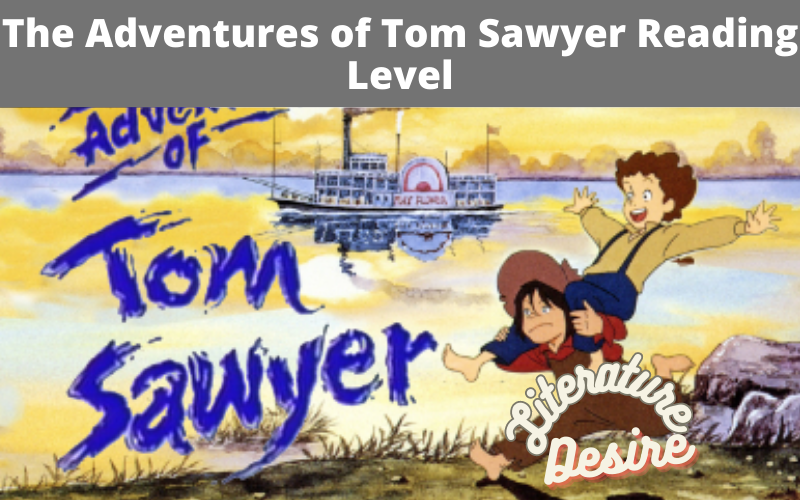In this article, we will explore the reading level of this beloved novel The Adventures of Tom Sawyer, and provide valuable insights for parents and educators to understand its suitability for young readers.
As parents and educators, we all strive to provide our children with engaging and age-appropriate literature. One timeless classic that has captivated readers for generations is “The Adventures of Tom Sawyer” by Mark Twain.
The Adventures of Tom Sawyer Reading Level: A Guide for Parents and Educators
Understanding Reading Levels
Before delving into the reading level of “The Adventures of Tom Sawyer,” it is essential to understand the concept of reading levels.
Reading levels help determine the complexity of a text and enable educators and parents to assess whether a book is appropriate for a particular reader’s skill level.
Various frameworks, such as Lexile and Fountas, and Pinnell, provide guidelines for categorizing books into different reading levels.
Analyzing the Reading Level of “The Adventures of Tom Sawyer”
“The Adventures of Tom Sawyer” is often recommended for readers aged 10 and above. The book falls under the middle-grade category, targeting readers who have progressed beyond beginner-level chapter books.
With its engaging narrative and relatable characters, it appeals to a wide range of readers, both young and old.
Factors Influencing the Reading Level of The Adventures of Tom Sawyer
Several factors contribute to the reading level of “The Adventures of Tom Sawyer.” Firstly, the vocabulary used in the book is moderately challenging, introducing readers to new words and idiomatic expressions. Secondly, the sentence structure varies, ranging from simple to more complex sentences.
This diversity helps readers develop their comprehension skills while keeping them engaged throughout the story. Lastly, the book explores social themes and historical contexts, providing opportunities for deeper analysis and critical thinking.
Benefits of Reading “The Adventures of Tom Sawyer”
Reading “The Adventures of Tom Sawyer” offers numerous benefits to young readers. Firstly, it fosters imagination and creativity, transporting children to a bygone era filled with thrilling adventures. Secondly, the book promotes a love for reading, as readers eagerly follow Tom Sawyer’s escapades.
Additionally, it introduces readers to important moral lessons, such as friendship, bravery, and the consequences of one’s actions. Overall, “The Adventures of Tom Sawyer” enriches both literacy skills and character development.
Exploring the Themes and Language
The Power of Imagination and Adventure
Tom Sawyer, the young protagonist of the novel, captures the hearts of readers with his vivid imagination and thirst for adventure.
From his daring exploits with his best friend, Huckleberry Finn, to his quest for buried treasure, Tom’s escapades transport readers to a world of endless possibilities.
The novel’s themes of friendship, freedom, and the pursuit of excitement resonate with readers of all ages.
Social Issues and Moral Lessons
Beneath the surface of Tom Sawyer’s thrilling adventures, Mark Twain skillfully addresses social issues and imparts valuable moral lessons.
The novel explores themes of social hierarchy, racial prejudices, and the stark contrast between the carefree lives of children and the responsibilities of adulthood.
Through Tom’s experiences, readers gain insights into the complexities of society and the importance of empathy and compassion.
Language and Narrative Style
Mark Twain’s writing style in “The Adventures of Tom Sawyer” is engaging, witty, and filled with colloquialisms and regional dialects. The language reflects the setting and time period, providing a rich and authentic reading experience.
Twain’s masterful use of descriptive language paints vivid pictures in the reader’s mind, capturing the essence of the Mississippi River and the idyllic small-town atmosphere of St. Petersburg.
Tips for Parents and Educators
Here are some valuable tips for parents and educators when introducing “The Adventures of Tom Sawyer” to young readers:
Preview the Book: The Adventures of Tom Sawyer Reading Level
Before recommending the book, familiarize yourself with its content and themes to ensure they align with your child’s or student’s maturity level.
Provide Context: The Adventures of Tom Sawyer Reading Level
Discuss the historical context of the story and encourage conversations about the book’s themes and moral lessons.
Support Vocabulary Development:
Help children understand unfamiliar words by providing definitions or encouraging them to use context clues.
Engage in Discussion:
Encourage readers to share their thoughts and insights about the book, promoting critical thinking and analytical skills.
Follow-Up Activities: The Adventures of Tom Sawyer Reading Level
Extend the reading experience by organizing related activities, such as creating artwork inspired by the story or reenacting key scenes.
Conclusion
“The Adventures of Tom Sawyer” is a classic novel that continues to captivate readers of all ages. Its moderate reading level, engaging storyline, and valuable life lessons make it a worthwhile addition to any young reader’s bookshelf.
By understanding the reading level and providing appropriate guidance, parents and educators can foster a love for literature and help children embark on their own adventures through the pages of this timeless tale.
Frequently Asked Questions
While the book is generally recommended for readers aged 10 and above, younger children can enjoy selected adaptations or abridged versions that are more suitable for their reading level.
The book contains some scenes and language that reflect the social norms and attitudes of the time it was written. It is advisable for parents and educators to provide guidance and address any sensitive topics that may arise.
Yes, several educational resources, such as study guides and lesson plans, are available online to enhance the reading experience and facilitate discussions.



